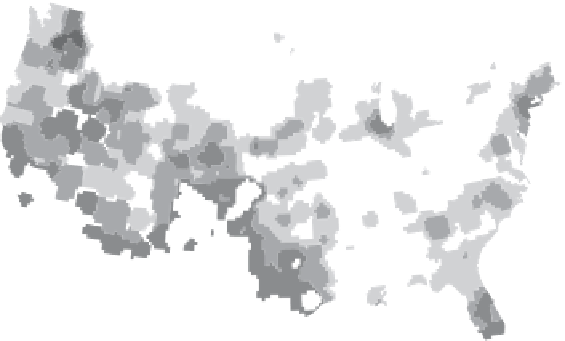Geography Reference
In-Depth Information
presence in other states of the region (see Figure 4.12). More than 39% live in the
West where they account for 9% of the total population. California has become the
epicenter of Mexican immigration, as well as the leading Hispanic state in the
country. With just under 1 million Hispanics (nearly 14% of the metropolitan
population), Los Angeles is the city most marked by the presence of Hispanics. Less
than 31% of Hispanics live in the Northeastern United States where they represent
only 2% of the population. The metropolitan area of New York still has the highest
concentration of Hispanics in the country with over 1.2 million people. Bordering
Mexico, the state of New Mexico still has the most visible population of Hispanics.
Between 1970 and 2000, the Hispanic population continued to grow rapidly, due to
both massive immigration and high fertility rates. According to Census Bureau
estimates, nearly 18.3 million American residents were born in Latin America in 2004,
which represents the majority of the American population that was born abroad, but
barely half the Hispanic population of the US. With nearly 39 million people, the
Hispanic population quadrupled in 30 years to represent 2004 approximately 13.7% of
the US population and, therefore, to become the largest “minority” in the country.
Hispanics
(%)
0
50
0 km
0
-
2.5
2.5 -
5.0
Metropolitan population
22,000,000
11,000,000
2,200,000
Method: Quartic
Kernel density
smoothing -
Bandwidth: 96 km
5.0 -
10.0
Hispanics
Others
10.0
-
20.0
20.0
-
50.0
50.0
-
81.6
National avg. share 10%
Source: US Census Bureau
Designed and made by JM Zaninetti, University of Orleans, CEDETE Institute
Figure 4.13.
Proportion of Hispanics in the US population in 2000









































































































































































































































